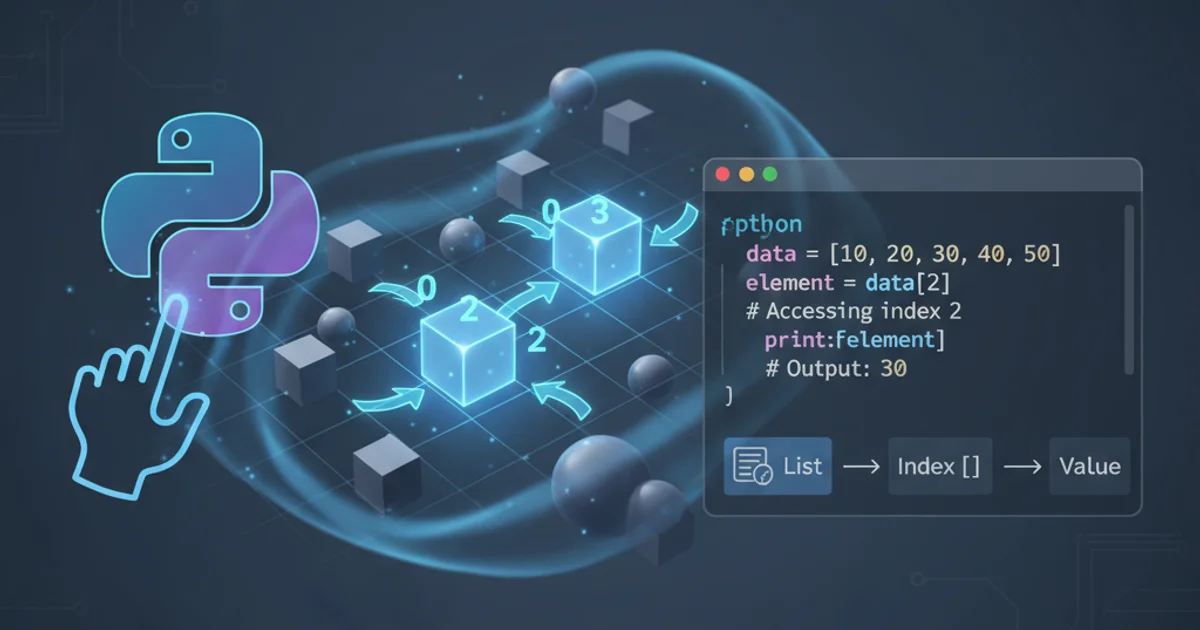What does index mean in python?
Categories:
Understanding 'index' in Python: A Comprehensive Guide

Explore the multifaceted meaning and usage of the 'index' concept in Python, from sequence positions to dictionary keys and more.
In Python, the term "index" is fundamental and appears in various contexts, primarily referring to the position of an item within an ordered sequence or the key used to access a value in a mapping. Understanding its different applications is crucial for effective Python programming. This article will delve into the primary uses of index across Python's built-in data structures and methods, providing clear explanations and practical examples.
Indexing in Sequences: Lists, Tuples, and Strings
The most common use of 'index' is to refer to the position of an element in an ordered collection like a list, tuple, or string. Python uses zero-based indexing, meaning the first element is at index 0, the second at index 1, and so on. You can also use negative indices to access elements from the end of the sequence, where -1 refers to the last element, -2 to the second to last, and so forth.
my_list = ['apple', 'banana', 'cherry', 'date']
print(my_list[0]) # Output: apple
print(my_list[2]) # Output: cherry
print(my_list[-1]) # Output: date
my_string = "Python"
print(my_string[0]) # Output: P
print(my_string[3]) # Output: h
print(my_string[-2]) # Output: o
Accessing elements using positive and negative indices in lists and strings.
my_list[10] for a list of length 4) will result in an IndexError.The .index() Method: Finding Element Positions
Many sequence types in Python (lists, tuples, and strings) provide a built-in .index() method. This method allows you to find the first occurrence of a specified value within the sequence and returns its index. You can also provide optional start and end arguments to search within a specific slice of the sequence.
fruits = ['apple', 'banana', 'cherry', 'banana', 'date']
print(fruits.index('banana')) # Output: 1 (first occurrence)
print(fruits.index('banana', 2)) # Output: 3 (search from index 2)
text = "hello world"
print(text.index('o')) # Output: 4
print(text.index('o', 5, 10)) # Output: 7 (search from index 5 to 9)
Using the .index() method to find the position of an element.
.index() method will raise a ValueError. It's often good practice to check for existence first using the in operator or wrap the call in a try-except block.flowchart TD
A[Start] --> B{Is element in sequence?}
B -- Yes --> C[Call .index() method]
C --> D{Element found?}
D -- Yes --> E[Return first index]
D -- No --> F[Raise ValueError]
B -- No --> F
F --> G[End]
E --> GFlowchart of the .index() method's behavior.
Indexing in Mappings: Dictionary Keys
While not strictly called 'indexing' in the same way as sequences, dictionaries use 'keys' to access their corresponding values. These keys serve a similar purpose to indices, providing a way to retrieve specific data. Dictionary keys must be immutable (e.g., strings, numbers, tuples) and unique.
my_dict = {
'name': 'Alice',
'age': 30,
'city': 'New York'
}
print(my_dict['name']) # Output: Alice
print(my_dict['age']) # Output: 30
# Adding a new key-value pair
my_dict['occupation'] = 'Engineer'
print(my_dict) # Output: {'name': 'Alice', 'age': 30, 'city': 'New York', 'occupation': 'Engineer'}
Accessing and adding elements in a dictionary using keys.
KeyError will be raised. To avoid this, you can use the .get() method, which returns None (or a specified default value) if the key is not found.print(my_dict.get('country')) # Output: None
print(my_dict.get('country', 'USA')) # Output: USA
Using the .get() method to safely access dictionary values.